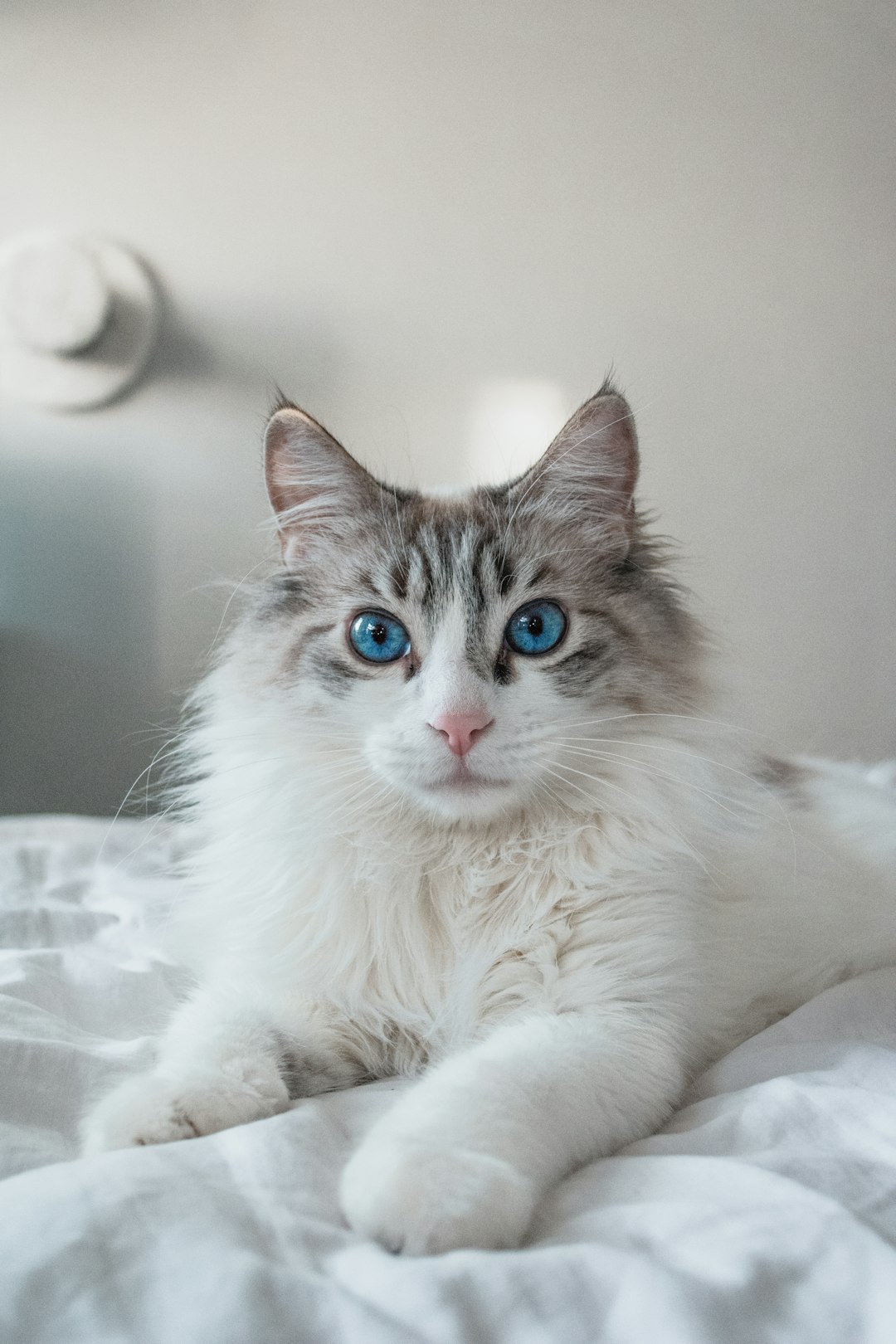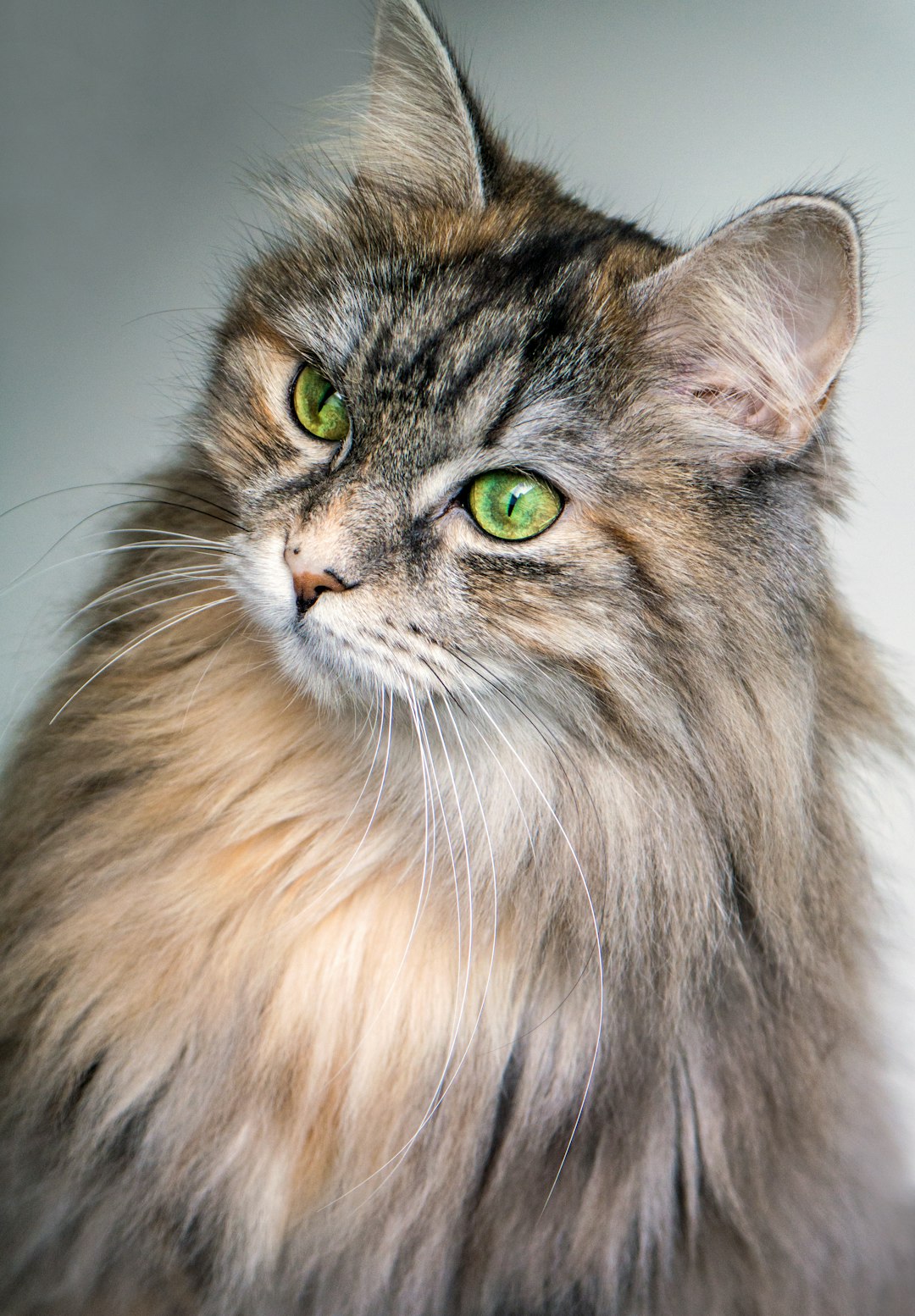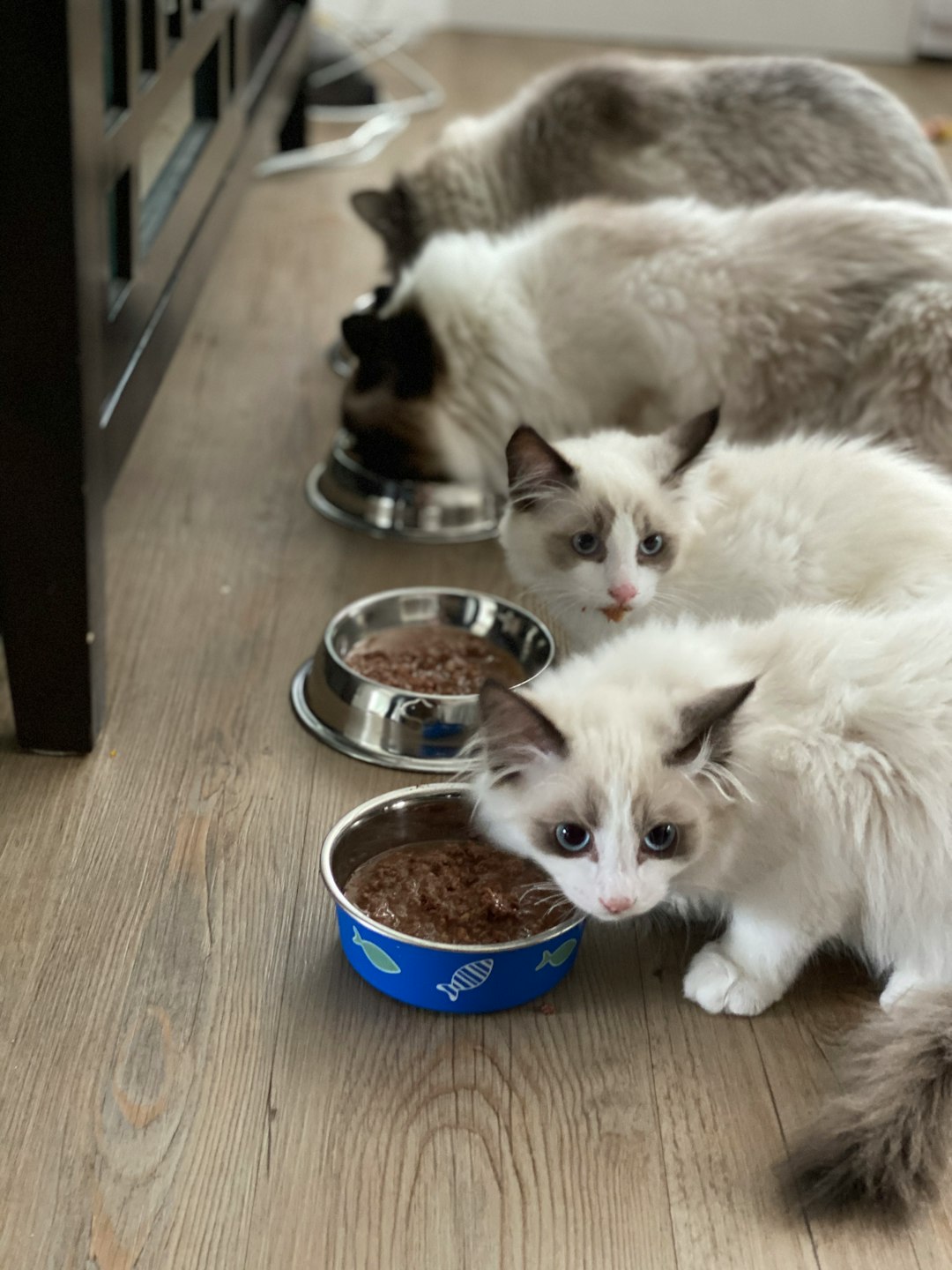As a cat owner, understanding your feline’s health is paramount, especially when it comes to their urinary system. Cat piss strain can lead to distress not only for your pet but also for you as a concerned caregiver. In this guide, we will explore the complex anatomy of cat urination, identify potential health issues tied to urinary strain, and highlight the signs that your cat may be struggling during this basic yet critical function. Moreover, we’ll delve into diagnostic options, treatment avenues, and preventive strategies that will empower you to better manage your cat’s urinary health. Ultimately, you’ll learn how to recognize when it’s time to seek veterinary assistance and the critical role you play in maintaining your cat’s overall well-being. Let’s dive into the world of feline urinary health and ensure our furry companions live happy, comfortable lives.
Understanding Cat Piss Strain
What is Cat Piss Strain?
Cat piss strain refers to a difficulty or discomfort that cats experience while urinating. This condition can manifest in various ways, including increased frequency of urination, a perceived struggle to urinate, or even pain that the cat may exhibit during this process. Understanding this strain is crucial for cat owners, as it may indicate underlying health problems that require attention.
Common Causes of Strain During Urination in Cats
Several factors can contribute to urination strain in felines. Below is a table summarizing some of the most prevalent causes:
| Cause | Description |
|---|---|
| Urinary Tract Infection | Infections can irritate the bladder lining, causing discomfort and a frequent urge to urinate. |
| Bladder Stones | These stone formations can obstruct or irritate the urinary tract, leading to painful urination and other complications. |
| Feline Idiopathic Cystitis | A mysterious inflammation of the bladder, often linked to stress, that can cause frequent and painful urination. |
| Tumors | Abnormal growths in the bladder can obstruct the urethra and cause significant issues during urination. |
| Dehydration | Insufficient water intake can lead to concentrated urine, which may cause strain while urinating. |
Symptoms to Look Out For
Identifying symptoms early can help ensure your cat receives prompt care. Here are some indicators that your cat may be experiencing strain while urinating:
- Frequent trips to the litter box: An increase in attempts to urinate can be a significant red flag.
- Straining or discomfort: Observing your cat straining, yowling, or exhibiting unusual behaviors during urination is concerning.
- Blood in urine: This alarming sign may indicate a significant issue and warrants immediate veterinary attention.
- Licking the genital area: Excessive grooming can be a response to pain or irritation in the urinary tract.
Understanding the nature and causes of urinary strain in your cat is essential for effective management and care.
The Anatomy of Cat Urination
How Cat Urinary System Works
The feline urinary system consists of several crucial components: the kidneys, ureters, bladder, and urethra. The kidneys filter waste from the bloodstream, producing urine. Urine then travels through the ureters into the bladder, where it is stored until the cat is ready to urinate. The urethra, a tube leading from the bladder to the outside, allows for the elimination of urine from the body. This intricate system ensures that waste is efficiently removed, aiding overall health.
Importance of Healthy Bladder Function
A healthy bladder is vital for maintaining proper urinary tract function. The bladder’s elasticity enables it to expand and contract, accommodating varying amounts of urine. If the bladder becomes overstretched or inflamed, it can lead to discomfort and conditions such as cat piss strain. Proper hydration and diet significantly contribute to maintaining bladder health, preventing issues related to urination.
Impact of Anatomy on Urination Issues
Understanding a cat’s urinary anatomy can illuminate potential causes of urination problems. For instance, any obstruction in the urethra—often due to crystals or stones—can lead to difficulty urinating, resulting in pain and strain. Older cats may also experience weakened bladder muscles, further complicating urination. Here’s a concise table illustrating key aspects:
| Anatomy Component | Function | Issues Linked |
|---|---|---|
| Kidneys | Filter blood, produce urine | Kidney disease can lead to toxin buildup |
| Ureters | Transport urine to bladder | Blockage may cause severe pain |
| Bladder | Store urine | Inflammation can result in difficulty urinating |
| Urethra | Eliminate waste | Stones can cause obstruction and straining |
By recognizing the structure and function of the urinary system, cat owners can better understand and respond to the signs of urinary issues in their pets. Knowledge of these aspects can help facilitate proactive care and timely veterinary intervention.
Potential Health Issues Linked to Cat Piss Strain
Urinary Tract Infections
Urinary tract infections (UTIs) are one of the most common causes of strain during urination in cats. When bacteria invade the urinary tract, they can lead to inflammation and discomfort. Symptoms may include frequent attempts to urinate, painful urination, and blood in the urine. It’s essential to address UTIs promptly, as they can escalate into more severe conditions if left untreated.
Bladder Stones and Crystals
Another serious issue associated with urinary strain is the formation of bladder stones or crystals. These solid masses can obstruct the urinary passage and cause significant pain. Cats may display signs such as excessive grooming of the genital area, straining without producing urine, or even vomiting. Treatment often requires a combination of dietary changes and, in severe cases, surgical intervention.
| Condition | Symptoms | Treatment |
|---|---|---|
| Urinary Tract Infections | Frequent urination, blood in urine | Antibiotics, increased water intake |
| Bladder Stones/Crystals | Straining to urinate, vomiting | Dietary changes, surgery (if severe) |
| Kidney Disease | Increased thirst, weight loss | Medication, specialized diet |
Kidney Disease
Kidney disease is a serious condition that can manifest in various ways, including difficulties with urination. As kidney function declines, cats may struggle with maintaining normal urine output. Symptoms can include increased drinking and urination, lethargy, and weight loss. Regular veterinary check-ups for older cats can help in early detection and management of this condition.
Understanding these potential health issues can help cat owners recognize when their pets might be experiencing urinary strain, prompting them to seek veterinary care in a timely manner.
Signs Your Cat is Experiencing Strain while Urinating
Understanding the signs that your cat may be experiencing strain while urinating is crucial for timely intervention. Below are some key indicators to watch for:
Behavioral Indicators
Cats are masters at hiding discomfort, but certain behaviors can suggest they are struggling to urinate. Look for:
| Indicator | Description |
|---|---|
| Frequent trips to the litter box | Your cat may attempt to urinate but produces little or no urine. |
| Vocalization | Increased meowing or signs of distress during attempts to urinate. |
| Hiding or withdrawal | Your cat may become reclusive and prefer to stay away from usual spots. |
Physical Symptoms of Discomfort
Physical symptoms can also shed light on your cat’s urinary health. Signs to observe include:
| Symptom | Description |
|---|---|
| Straining to urinate | Visible effort or straining in the litter box can indicate discomfort. |
| Blood in urine | A serious sign that warrants immediate veterinary attention. |
| Excessive licking | Cats may excessively groom their genital area if they’re feeling discomfort. |
Changes in Urination Habits
Monitoring your cat’s urination pattern is essential. Here are some critical changes to look for:
| Change | Description |
|---|---|
| Increased frequency | Urinating more often than usual can indicate strain. |
| Urinating outside the litter box | A sudden change in litter box habits could signal a problem. |
| Incontinence | Accidents may occur due to an inability to fully control urination. |
Being vigilant for these signs can help ensure your cat receives the necessary care and treatment for any issues related to Cat Piss Strain.
Diagnosis of Urination Strain in Cats
Veterinary Examination Process
Diagnosing Cat piss strain begins with a thorough veterinary examination. During this process, the veterinarian will assess your cat’s overall health, behavior, and any visible signs of discomfort. Key areas of evaluation include:
- Physical Examination: Checking the abdomen for swelling or pain.
- Behavioral Assessment: Observing urination habits, such as straining or frequent visits to the litter box.
- Medical History: Discussing any prior health issues or changes in diet and environment.
Tests and Imaging Techniques
Once the veterinary examination is complete, the veterinarian may recommend specific tests to pinpoint the cause of the urinary strain. Common diagnostic tools include:
| Test Type | Purpose |
|---|---|
| Urinalysis | Analyzes urine for crystals, bacteria, or blood. |
| Blood Tests | Evaluates kidney function and detects underlying issues. |
| X-rays or Ultrasound | Visualizes the urinary tract for blockages or structural problems. |
Interpreting Test Results
Understanding the results of these tests is crucial for an accurate diagnosis. Your veterinarian will explain what each test indicates:
- Normal Urinalysis: Suggests strain may not be related to infections or crystals.
- Abnormal Blood Tests: May highlight kidney or bladder issues requiring further investigation.
- Imaging Findings: Blockages or malformations will guide treatment options.
Recognizing these elements will help you better understand your cat’s health and facilitate effective management of any cat piss strain.
Treatment Options for Cat Piss Strain
Medical Treatments Available
When dealing with urinary strain in felines, it is crucial to seek veterinary guidance to ensure the correct treatment is administered. Many veterinarians may prescribe medications such as anti-inflammatories, antibiotics for infections, or muscle relaxants to provide relief. Additionally, a pain management plan might be part of the treatment protocol to enhance your cat’s comfort. For persistent issues, urinary acidifiers can be used to dissolve crystals and maintain a healthy urinary pH, which helps in preventing future occurrences.
| Medication Type | Purpose | Example |
|---|---|---|
| Anti-inflammatories | Reduce inflammation | Meloxicam |
| Antibiotics | Treat urinary tract infections | Amoxicillin |
| Muscle relaxants | Provide comfort and reduce spasms | Diazepam |
Surgical Options
In more severe cases where medical management fails, surgical intervention may be considered. This can include procedures to remove blockages or correct anatomical defects contributing to urinary strain. One common surgical approach is the urethrostomy, which creates a new urinary opening, especially in male cats prone to blockages. Always discuss the risks and benefits of surgery thoroughly with your veterinarian to ensure the best outcome for your feline friend.
Home Remedies and Supportive Care
In addition to medical and surgical treatments, several home remedies and supportive care strategies can alleviate discomfort and promote urinary health. Providing plenty of fresh water and encouraging your cat to stay hydrated is essential, helping to flush the urinary tract. Also, stress reduction through environmental enrichment—such as interactive toys and safe, comfortable resting places—can be beneficial.
| Home Care Strategy | Benefit |
|---|---|
| Increased hydration | Dilutes urine, reduces strain |
| Stress management | Lowers anxiety, which promotes health |
| Regular litter box cleaning | Encourages use, reduces anxiety |
By understanding various treatment options, cat owners can make informed choices for their pet’s urinary health. Always consult with a veterinarian before implementing any new treatment plan, as they can guide you on the best course of action tailored to your cat’s specific needs.
Preventive Measures for Urinary Strain in Cats
Importance of Hydration
Maintaining proper hydration is crucial for preventing urinary strain in cats. Cats need an adequate intake of water to ensure healthy kidney function and bladder activity. To encourage your cat to drink more, consider providing:
| Water Source | Benefits |
|---|---|
| Fresh water bowls | Easy access; can be placed in multiple locations |
| Pet water fountains | Running water attracts cats; prevents stagnation |
| Wet cat food | High moisture content supports hydration |
Dietary Considerations
A balanced diet tailored for your feline can significantly reduce the risk of urinary strain. Key dietary considerations include:
- High-quality protein: Supports overall health and aids in muscle maintenance.
- Specific formulations: Foods designed for urinary health can help dissolve bladder crystals and maintain pH levels.
- Avoiding allergens: Some cats may react negatively to certain ingredients, leading to urinary issues.
Regularly check ingredient labels and be mindful of your cat’s dietary needs.
Regular Veterinary Check-ups
Routine veterinary visits are essential for identifying potential issues before they become critical. During these check-ups, veterinarians can assess your cat’s urinary health through:
| Assessment Type | Purpose |
|---|---|
| Urinalysis | Detects abnormalities in urine composition |
| Blood tests | Evaluates kidney function and overall health |
| Physical examinations | Identifies signs of discomfort or additional stress |
Scheduling regular check-ups ensures that any urinary tract issues can be addressed promptly, promoting a healthier, happier life for your cat.
When to Seek Veterinary Help
Recognizing Emergency Situations
As a cat owner, it’s crucial to be aware of signs that indicate your feline friend requires immediate veterinary attention. If your cat is straining to urinate and is unable to produce any urine, this could indicate a blockage, which is a medical emergency. Other critical signs include:
| Symptoms | Description |
|---|---|
| Frequent trips to the litter box | Attempts to urinate but producing little or no urine. |
| Signs of pain or discomfort | Whining or excessive grooming of the genital area. |
| Blood in urine | Presence of red or pinkish urine indicates a serious issue. |
| Lethargy | Unusual behavior, such as a lack of energy or appetite. |
Scheduling Veterinary Appointments
If your cat exhibits mild symptoms of Cat Piss Strain, it is still advisable to schedule an appointment with your veterinarian promptly. Even issues that seem minor can escalate into serious conditions if left untreated. When scheduling:
- Provide specific details about your cat’s symptoms.
- Prepare to discuss your cat’s medical history and any recent changes in behavior, diet, or environment.
What to Expect During Your Visit
During your veterinary visit, expect thorough examinations to determine the underlying cause. The vet may conduct:
- Physical Examinations: Checking for signs of pain, abnormal masses, or swelling.
- Urinalysis: Analyzing the urine sample for signs of infection or crystals.
- Imaging Tests: X-rays or ultrasounds may be necessary to assess for urinary blockages or stones.
Being prepared aids in receiving the best care for your cat and ensures that any Cat Piss Strain is addressed effectively.
The Role of Cat Owners in Managing Urinary Health
Monitoring Your Cat’s Behavior and Urination
As a responsible cat owner, monitoring your feline friend’s behavior and urination habits is crucial. Observing any changes in frequency, volume, or straining can indicate potential urinary health issues, including Cat piss strain. Keeping a journal can help track these behaviors over time, allowing you to identify patterns and communicate effectively with your veterinarian. Key indicators to note include:
| Behavior | Normal Range | Concerns |
|---|---|---|
| Frequency of urination | 2-4 times per day | Straining, blood, or absence |
| Urine volume | Varies by water intake | Small amounts or excessive |
| Behavior during urination | Calm and relaxed | Whining, hiding, or frequent attempts |
Creating a Stress-Free Environment
Stress is a significant factor affecting a cat’s urinary health. By creating a calm and secure environment, you can help alleviate anxiety that may contribute to Cat piss strain. Implement the following strategies:
- Hide Litter Boxes: Choose quiet locations for litter boxes to provide a private space.
- Playtime: Engage in regular play to reduce stress and provide mental stimulation.
- Safe Spaces: Create cozy hiding spots where your cat can retreat when feeling overwhelmed.
Encouraging routines and minimizing sudden changes in their environment will also help.
Educating Yourself on Cat Health
Lastly, understanding cat health and urinary issues will empower you as an owner. Research topics related to urinary health, such as common diseases, dietary needs, and hydration tips. Resources like veterinary websites, books, and online forums can be invaluable.
By staying informed, you can proactively manage your cat’s health, preventing issues before they escalate. Remember, an educated owner is a key player in maintaining their feline’s urinary well-being.
The Impact of Stress on Cat Urination
Understanding Feline Stressors
Cats can be sensitive creatures, and various stressors in their environment may lead to urinary issues, including Cat piss strain. Common stressors for felines include changes in their home environment, like moving to a new house or the introduction of new pets. Additionally, loud noises, such as thunderstorms or fireworks, can also contribute to stress, making a cat more anxious. Here’s a brief overview of potential feline stressors:
| Feline Stressors | Description |
|---|---|
| Environmental Changes | Moving homes, new family members, or new pets. |
| Loud Noises | Sudden sounds that can startle or frighten them. |
| Lack of Routine | Disruptions in feeding or play schedules. |
| Territorial Disputes | Conflicts with other cats or animals. |
How Stress Affects Urinary Function
When cats experience stress, their bodies release stress hormones, which can negatively impact their urinary system. This may manifest as an increase in urgency or frequency of urination, making them uncomfortable. Prolonged stress can lead to inflammation of the urinary tract or even urinary blockage, exacerbating the Cat piss strain.
Managing Stress to Prevent Cat Piss Strain
To mitigate the effects of stress on your cat’s urination, consider implementing the following strategies:
- Safe Spaces: Create a quiet area where your cat can retreat to feel secure.
- Routine: Maintain a consistent schedule for feeding, playtime, and litter box cleaning.
- Environmental Enrichment: Provide diverse stimuli such as toys, scratching posts, and climbing areas to keep your cat engaged.
- Calming Products: Use pheromone diffusers or anxiety-reducing supplements after consulting with your veterinarian.
By actively managing stress factors, you can significantly reduce the likelihood of Cat piss strain and promote better urinary health for your feline companion.
Frequently Asked Questions
What is Cat Piss Strain in cats?
Cat Piss Strain refers to a specific condition where a cat experiences difficulty or pain while urinating. This strain could be a symptom of underlying ailments, such as a urinary tract infection (UTI) or other health issues affecting the urinary system. It is characterized by signs of discomfort during urination, such as frequent trips to the litter box, vocalizations, or straining to urinate. Understanding this condition is crucial for a cat’s health, as it may require veterinary intervention.
What are the common symptoms of urinary strain in cats?
Common symptoms of urinary strain in cats include frequent attempts to urinate with little success, blood in the urine, vocalizations during urination, licking of the genital area, and behavioral changes such as aggression or hiding. Additionally, a cat may exhibit signs of discomfort, such as restlessness or pacing, while trying to urinate. If you observe any of these symptoms, it is essential to consult a veterinarian promptly to determine the underlying cause and receive appropriate treatment.
What causes urinary strain in cats?
Urinary strain in cats can be caused by several factors, most commonly urinary tract infections (UTIs), bladder stones, or crystals in the urine, which can obstruct normal urination. Other potential causes may include inflammation in the urinary tract, trauma to the area, and behavioral issues such as stress or anxiety. Recognizing the cause of urinary strain is vital for effective treatment, and a veterinarian can provide the necessary diagnostics to identify the problem.
How can I help my cat with urinary strain?
If your cat is experiencing urinary strain, the first step is to consult a veterinarian to diagnose the underlying issue. Treatment may include medications, dietary changes to dissolve crystals or stones, and increased water intake to help flush the urinary system. Additionally, ensure your cat has access to clean litter boxes in a stress-free environment. Monitor their water consumption and consider using wet food to promote hydration, as proper hydration is key in preventing urinary issues.
When should I take my cat to the vet for urinary issues?
You should take your cat to the vet if you notice any signs of urinary issues, such as frequent or painful urination, blood in the urine, or inability to urinate. Additionally, if your cat is showing signs of distress, lethargy, or a sudden change in behavior, it is crucial to seek veterinary attention immediately. Delaying treatment can lead to serious health risks, including complete urinary obstruction, which is a medical emergency.



